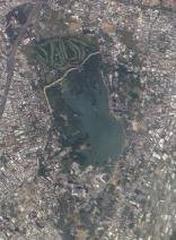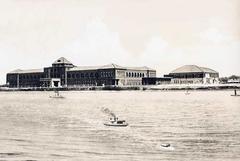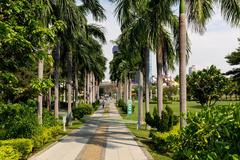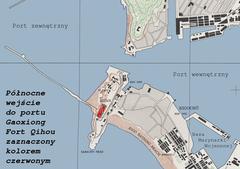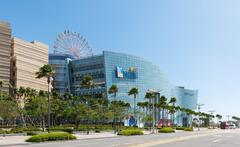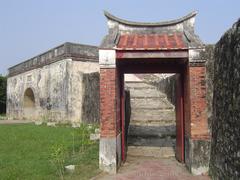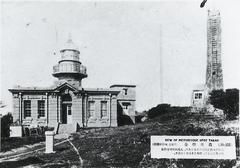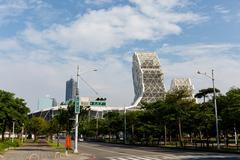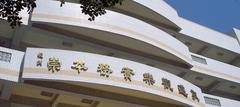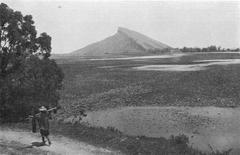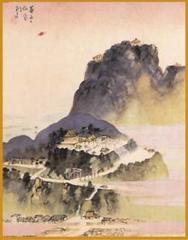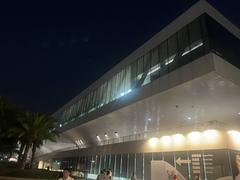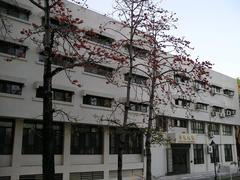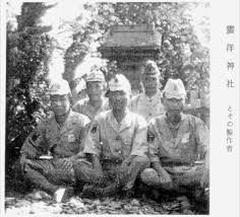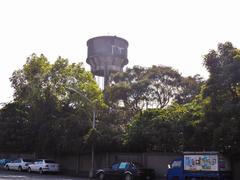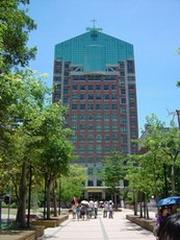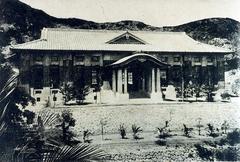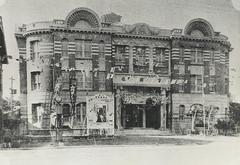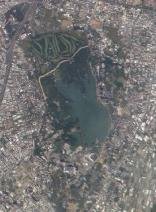
Comprehensive Guide to Visiting Wenqian Road, Kaohsiung, Taiwan
Published Date: 23/07/2024
Introduction
Wenqian Road (文前路) in Kaohsiung, Taiwan, is a remarkable destination that weaves together the threads of history, culture, and modernity. As a vibrant urban area, Wenqian Road offers visitors an immersive experience into Kaohsiung’s rich heritage, from its early settlement periods to its current status as a bustling thoroughfare. Originally inhabited by the Makatao indigenous people and later developed by Han Chinese settlers in the 17th century, Wenqian Road has seen significant transformations throughout various historical epochs (Taiwan History). The Japanese colonial period (1895-1945) marked a pivotal era of modernization, with extensive infrastructure projects that laid the foundation for Kaohsiung’s growth as a major port city. Post-World War II, under the Republic of China, furthered this development, leading to rapid industrialization and urbanization through the 1960s and 1970s (Economic History of Taiwan). Today, as a blend of historic charm and contemporary amenities, Wenqian Road is a must-visit for those seeking to explore the multifaceted cultural landscape of Kaohsiung. This comprehensive guide will delve into the historical background, cultural significance, visitor information, and more, providing a detailed roadmap for an enriching visit to Wenqian Road.
Table of Contents
- Introduction
- Historical Background
- Cultural Significance
- Architectural Heritage
- Visitor Information
- Special Events and Tours
- Photographic Spots
- Economic Impact
- Preservation Efforts
- FAQs
- Conclusion
Historical Background
Early Settlement and Development
Wenqian Road has a rich historical background that dates back to the early settlement periods of Kaohsiung. Originally known as Takao, the area was inhabited by the Makatao indigenous people before the arrival of Han Chinese settlers in the 17th century. Significant development began during the Qing Dynasty (1683-1895), when the Chinese government encouraged migration to Taiwan to bolster its agricultural output and defense capabilities (Taiwan History).
Japanese Colonial Era (1895-1945)
The Japanese colonial period marked a significant transformation for Kaohsiung and Wenqian Road. Following the Treaty of Shimonoseki in 1895, Taiwan was ceded to Japan, and the Japanese government initiated extensive infrastructure projects to modernize the island. Kaohsiung was developed into a major port city, and Wenqian Road became a crucial artery in the urban planning of the area. The Japanese introduced modern urban planning techniques, including the construction of roads, railways, and public buildings, laying the foundation for Kaohsiung’s future growth (Japan-Taiwan Relations).
Post-World War II and the Republic of China Era
After World War II, Taiwan was returned to the Republic of China (ROC) in 1945. The post-war period saw rapid industrialization and urbanization in Kaohsiung, driven by the ROC government’s economic policies. Wenqian Road, situated in a strategic location, became a focal point for commercial and residential development. The 1960s and 1970s were particularly transformative, as Kaohsiung emerged as a major industrial hub, attracting investments in petrochemicals, shipbuilding, and steel manufacturing (Economic History of Taiwan).
Modern Era and Urban Renewal
In recent decades, Wenqian Road has undergone significant urban renewal projects aimed at improving the quality of life for residents and enhancing the area’s appeal to tourists. The Kaohsiung City Government has invested in infrastructure improvements, including the expansion of public transportation networks, the creation of green spaces, and the preservation of historical sites. These efforts have transformed Wenqian Road into a vibrant and dynamic part of the city, blending historical charm with modern amenities (Kaohsiung Urban Development).
Cultural Significance
Wenqian Road is not only a historical landmark but also a cultural hub that reflects the diverse heritage of Kaohsiung. The area is home to several temples, traditional markets, and cultural festivals that celebrate the rich traditions of the local community. One notable example is the Qianjin District, where Wenqian Road is located, which hosts the annual Kaohsiung Lantern Festival. This event attracts thousands of visitors who come to admire the intricate lantern displays and participate in cultural activities (Kaohsiung Lantern Festival).
Architectural Heritage
The architectural landscape of Wenqian Road is a testament to its historical evolution. The area features a mix of colonial-era buildings, traditional Taiwanese houses, and modern structures. Notable architectural landmarks include the Kaohsiung Martyrs’ Shrine, which was originally built during the Japanese colonial period and later repurposed to honor ROC soldiers. The shrine’s architecture blends traditional Chinese and Japanese elements, reflecting the complex history of the region (Kaohsiung Martyrs’ Shrine).
Visitor Information
Visiting Hours and Tickets
Wenqian Road is accessible 24/7; however, specific landmarks and attractions along the road, such as temples and museums, have varying visiting hours. It is advisable to check the official websites or contact the venues directly for the most up-to-date information on visiting hours and ticket prices.
Travel Tips
- Public Transportation: Kaohsiung’s extensive public transportation network makes it easy to reach Wenqian Road. The nearest MRT station is the Formosa Boulevard Station, which is a short walk away.
- Accessibility: Wenqian Road is generally accessible to visitors with mobility issues, but some historical sites may have limited accessibility.
- Nearby Attractions: While visiting Wenqian Road, consider exploring nearby attractions such as the Love River, the Kaohsiung Museum of History, and Central Park.
Special Events and Tours
Wenqian Road hosts several special events throughout the year, including the Kaohsiung Lantern Festival and various cultural performances. Guided tours are available, offering deep dives into the history and cultural significance of the area. These tours often include visits to key landmarks and provide insightful commentary from knowledgeable guides.
Photographic Spots
For photography enthusiasts, Wenqian Road offers numerous picturesque spots. The Kaohsiung Martyrs’ Shrine, with its blend of architectural styles, and the vibrant scenes of the traditional markets are particularly photogenic.
Economic Impact
The historical development of Wenqian Road has had a profound impact on the local economy. The area’s strategic location and historical significance have made it a prime destination for businesses, tourists, and residents alike. The commercial establishments along Wenqian Road, including shops, restaurants, and hotels, contribute significantly to Kaohsiung’s economy. The road’s historical and cultural attractions also draw tourists, boosting the local tourism industry (Kaohsiung Tourism).
Preservation Efforts
Preserving the historical and cultural heritage of Wenqian Road is a priority for the Kaohsiung City Government. Various initiatives have been undertaken to protect and restore historical buildings, promote cultural activities, and educate the public about the area’s history. These efforts ensure that Wenqian Road remains a living testament to Kaohsiung’s rich past while continuing to evolve as a modern urban space (Kaohsiung Cultural Affairs Bureau).
FAQs
- What are the visiting hours for Wenqian Road?
- Wenqian Road itself is accessible 24/7, but specific attractions have varying hours.
- How do I get to Wenqian Road?
- The nearest MRT station is Formosa Boulevard Station. Public buses and taxis are also available.
- Are there guided tours available?
- Yes, guided tours are available and can be booked through various tour operators or local guides.
Conclusion
Wenqian Road in Kaohsiung, Taiwan, is a fascinating destination with a rich historical background and vibrant cultural scene. Its blend of early settlement, colonial influence, post-war development, and modern urban renewal makes it a must-visit for history enthusiasts and tourists alike. Through ongoing preservation efforts and urban development projects, Wenqian Road continues to thrive as a dynamic area, offering a unique blend of historical charm and modern amenities. Be sure to plan your visit and explore all that this remarkable road has to offer.
Sources and References
- Exploring Wenqian Road - History, Culture, and Visitor Information in Kaohsiung, Taiwan. Retrieved from Taiwan History
- Economic History of Taiwan. Retrieved from Brookings Institute
- Kaohsiung Urban Development. Retrieved from Kaohsiung City Government
